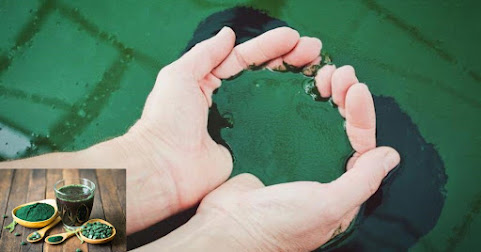Market Trends and Opportunities for Commercial Spirulina Farming
Described as one of the best foods for the future”, Spirulina is now being viewed as a major nutrition source around the globe. This microalga or cyanobacterium contains a broad spectrum of nutrients, proteins, and antioxidants, making this organic substance ideal for many applications in different industries. The spirulina industry has rapidly expanded, with this superfood already in over 40 nations, most commonly for dietary supplementation purposes, however, the spirulina Industry keeps shifting to relaying messages to wider audiences and developing new formulations.
Below, we explore the current market applications of
spirulina, as well as emerging
trends and opportunities for commercial spirulina farming.
Commercial Spirulina Farming
Commercial spirulina farming is an immense
market opportunity because of the rise in infernal concerns about health and
well-being by averting people to natural sources of nutrition supplements.
The spirulina market was evaluated at more than USD 542.52
million and will go up to approximately USD 1129.55 million by the year 2030
with a CAGR of 9.60%. This examines the market’s focus on spirulina’s
traditional role as a dietary Help while considering its other potential
related to spirulina
marketing health schemes and innovative offerings. The industry has a
forecasted growth from 393.6 million in 2019 to approximately 897.61 million by
the year 2027 implying good growth prospects and thus new market participants
and existing players will have many opportunities in the industry.
As the market grows there are chances in coming up with new
products, new ways of farming as well as other uses such as in the cosmetics
and pharmaceutical industries.
Exploring Various Spirulina Product Applications in the Market
- Colorants-Most
industrial products now include spirulina because it enables them to
provide a natural blue color. With the rising trend in switching to
organic products, spirulina-based colorants are seen as the solution. It
is incorporated in the food industry for blue-green coloring as well as in
cosmetics and personal care products where natural color is desired.
- Food
Industry-Spirulina is a common ingredient in functional foods as it is
highly nutritious and can be added to numerous foods such as protein bars,
and smoothies or even incorporated in snack and pasta production. As a
superfood, there is significant demand for spirulina in the ever-growing
wellness market as people want to consume food that provides additional
benefits.
- Supplements-There
are powder, tablet, and capsule forms of spirulina supplements that are
widely available in the health and wellness market and are considered to
be among the highest-selling products. They are acclaimed due to their
high antioxidant activity, immune boosting, and as a good source of
vitamins and minerals. The market for spirulina supplements is broad and
ranges from bodybuilders to anyone who needs protein and vital nutrients
of plant origin.
- Animal
Feed-Spirulina finds application for use in livestock and pet food,
especially for aquaculture purposes. Its rich protein content adds
significantly to the animal feed’s nutritional value as well which
supports the health and growth of the animals. As a feed additive,
spirulina has proven to be beneficial to livestock and poultry by
improving immunity, digestive health, and general well-being.
- Cosmetics-Spirulina
expands to other industries including the cosmetics industry, as its
anti-inflammatory and moisturizing properties have also been applied in
skincare. Skincare products appreciate their natural antioxidants such as
vitamins A and E. Thanks to its ability to enhance skin and reduce
ruddiness, it quickly became cherished by both luxury and natural skincare
brands.
- Fish
Feed-Spirulina is now part of fish feed in the aquaculture industry
due to its role in stimulating growth and increasing fish color. The
carotenoids present in spirulina enhance the color of ornamental fish, and
their nutritional benefits allow for a wide range of fish to be
incorporated, which is optimal for this market sector.
Global Usage and Versatile Applications
Spirulina’s range of nutrients has seen its use in over 40
countries, most of which are in health-promoting products.
Read the full article on our website to uncover all
the emerging trends, commercial farming opportunities, and the bright future of
this superfood!




Comments
Post a Comment